Physio Lect 33 - Pulmonary Mechanics Static
1/19
There's no tags or description
Looks like no tags are added yet.
Name | Mastery | Learn | Test | Matching | Spaced |
|---|
No study sessions yet.
20 Terms
T/F: When discussing the properties of the lung clinically we will use the measure of lung compliance
T - Understand that the units for compliance in the pulmonary unit are L/ cm H2O due to the smaller pressures in respiration compared to blood circulation.
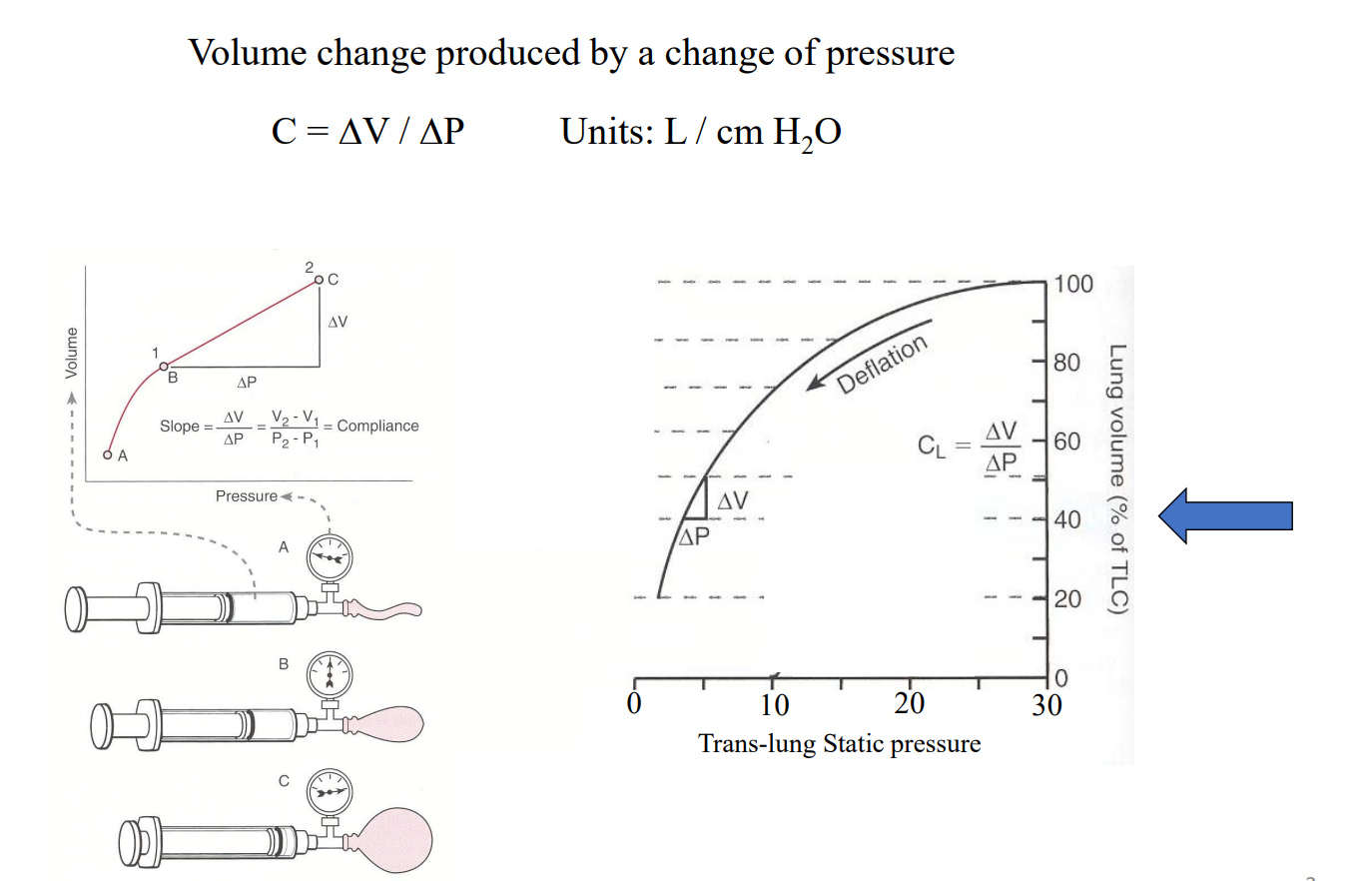
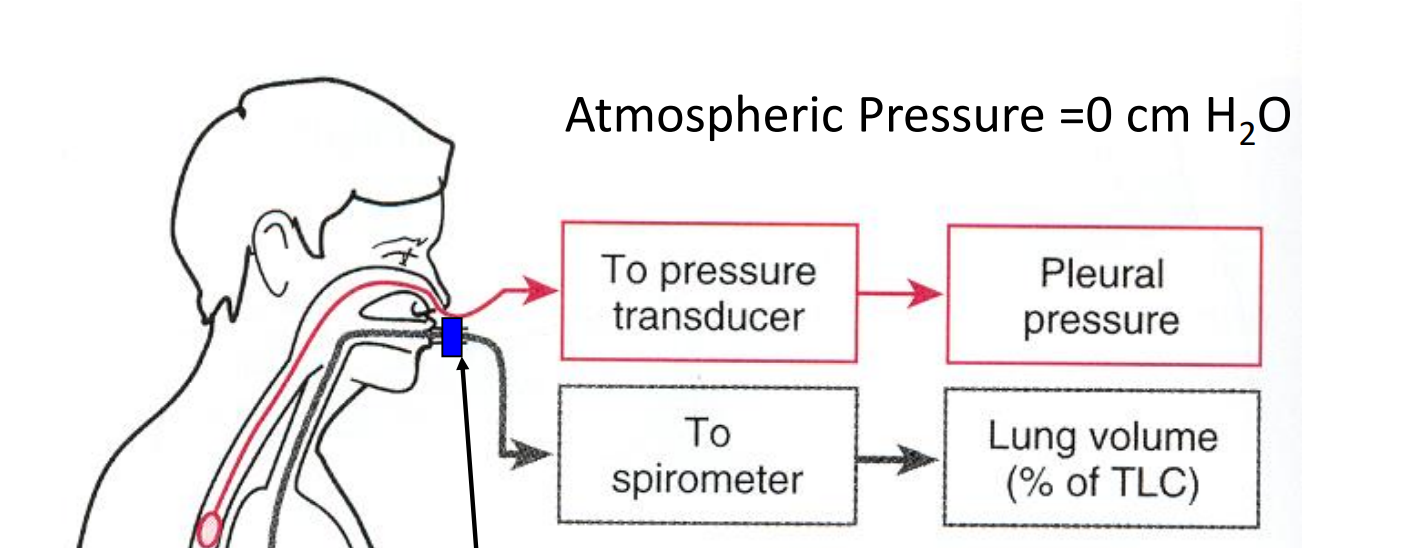
If the air flow at the mouth piece is closed using a shutter to block the tube the pressure in the alveoli will…
equilibrate with air at the mouth piece allowing alveolar pressure to be measured.
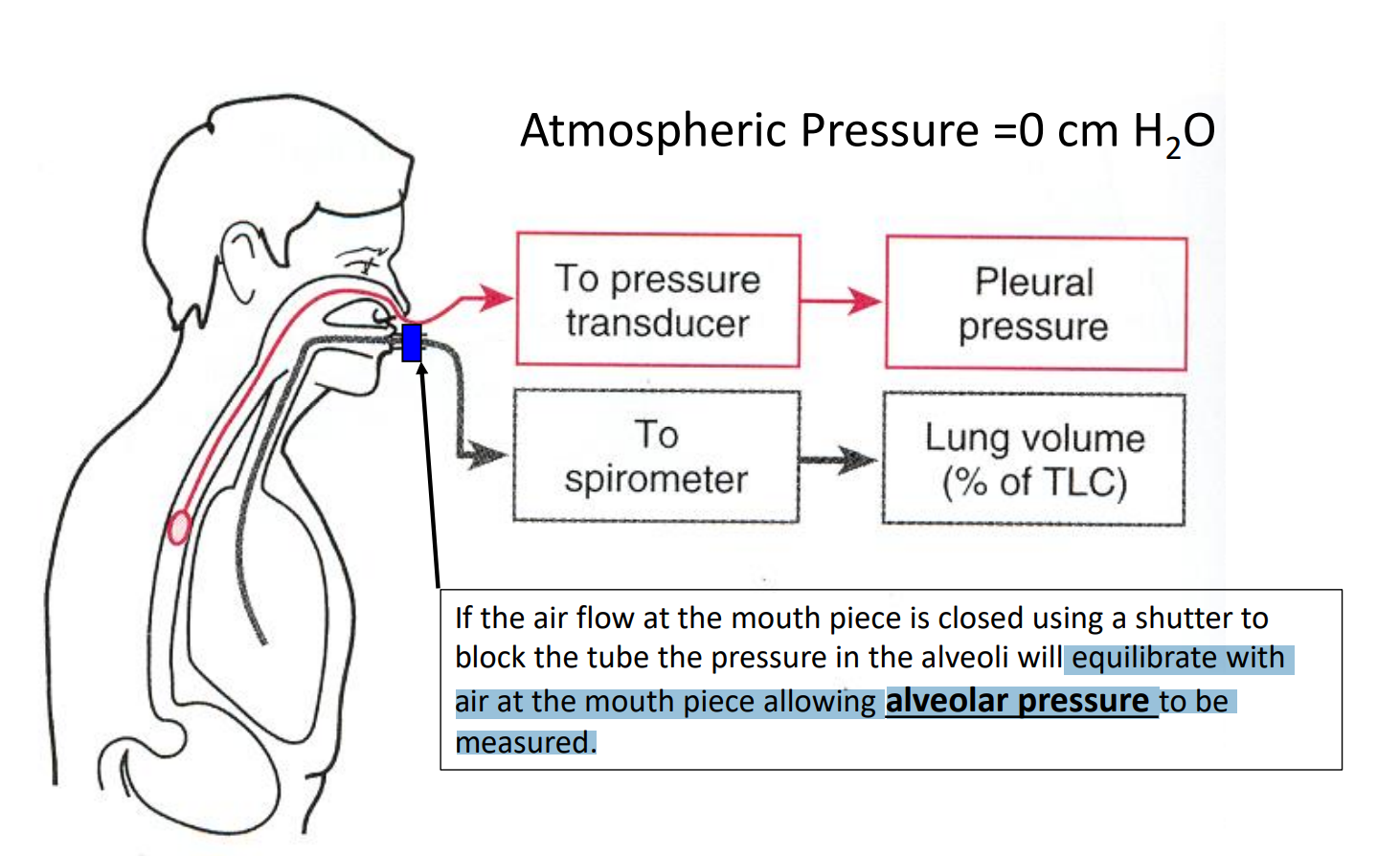
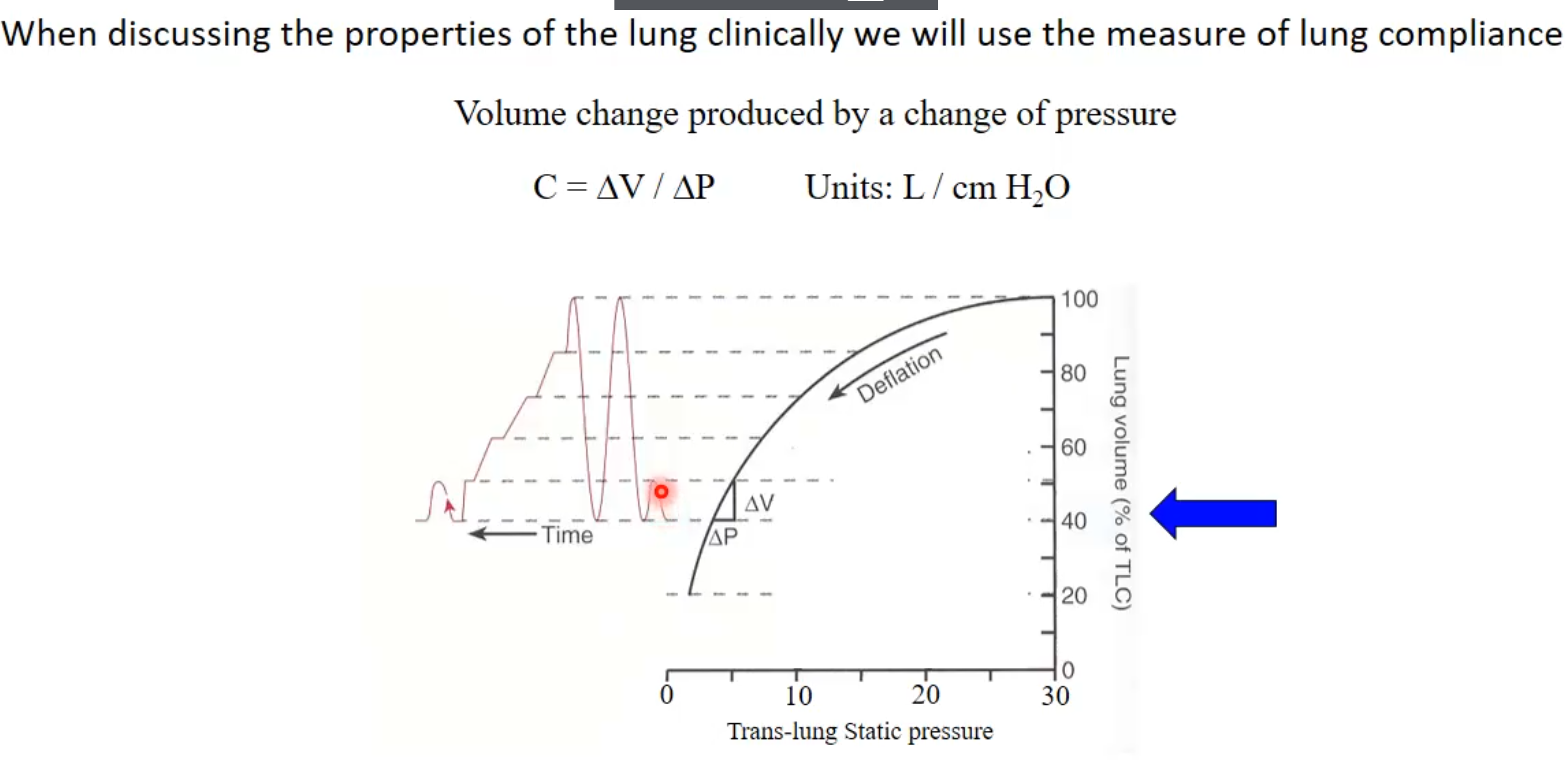
How do we get this alveolar pressure?
Block air movement at mouth piece by shutting shutter. Take pressure measurement at mouth piece and from esophageal balloon.
Let a volume of air leave lung then block air movement at mouth piece by shutting shutter. Again take pressure measurement at mouth piece and from esophageal balloon.
Repeat pressure measurements when letting out known volumes out until back at FRC.
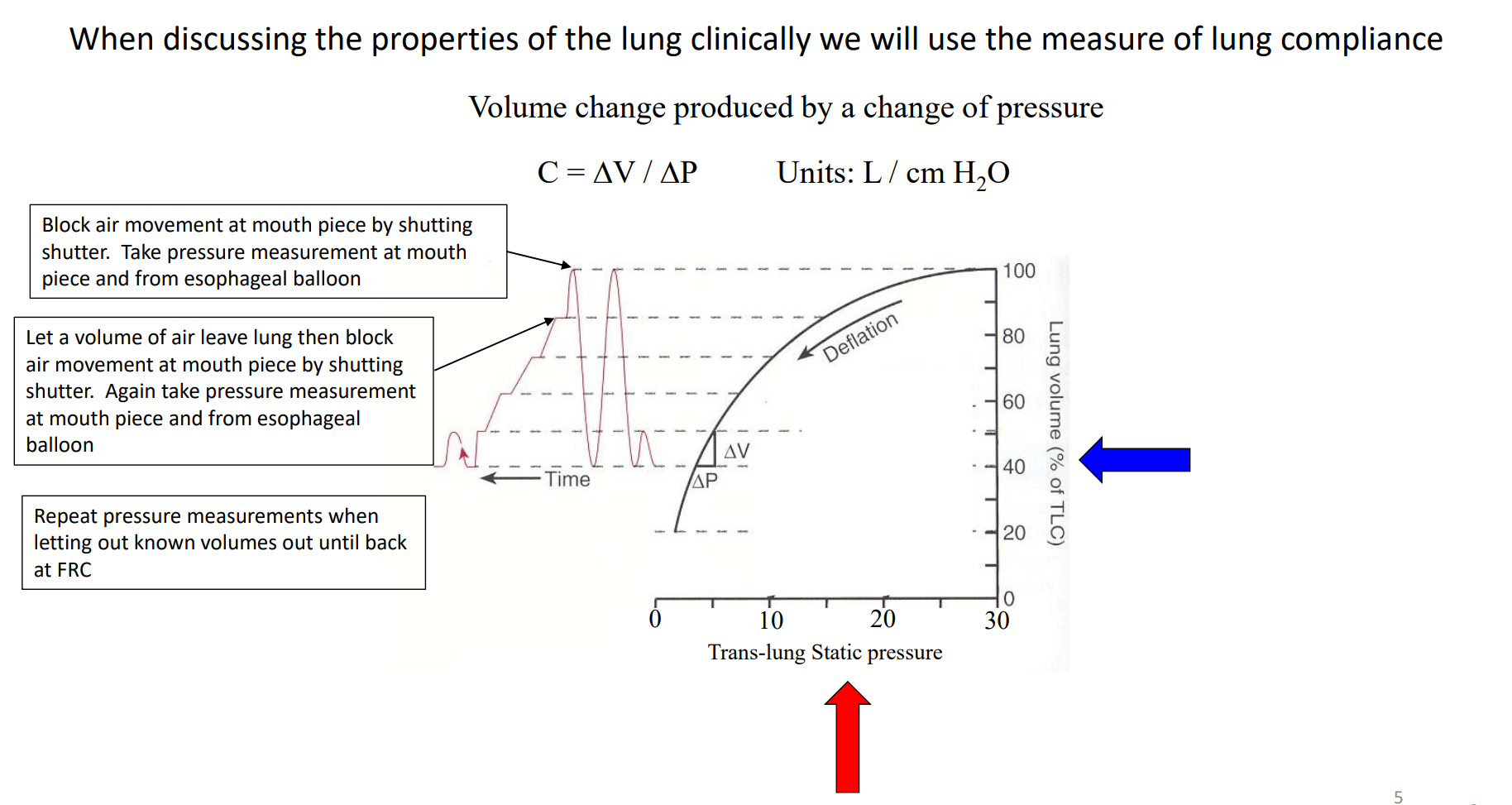
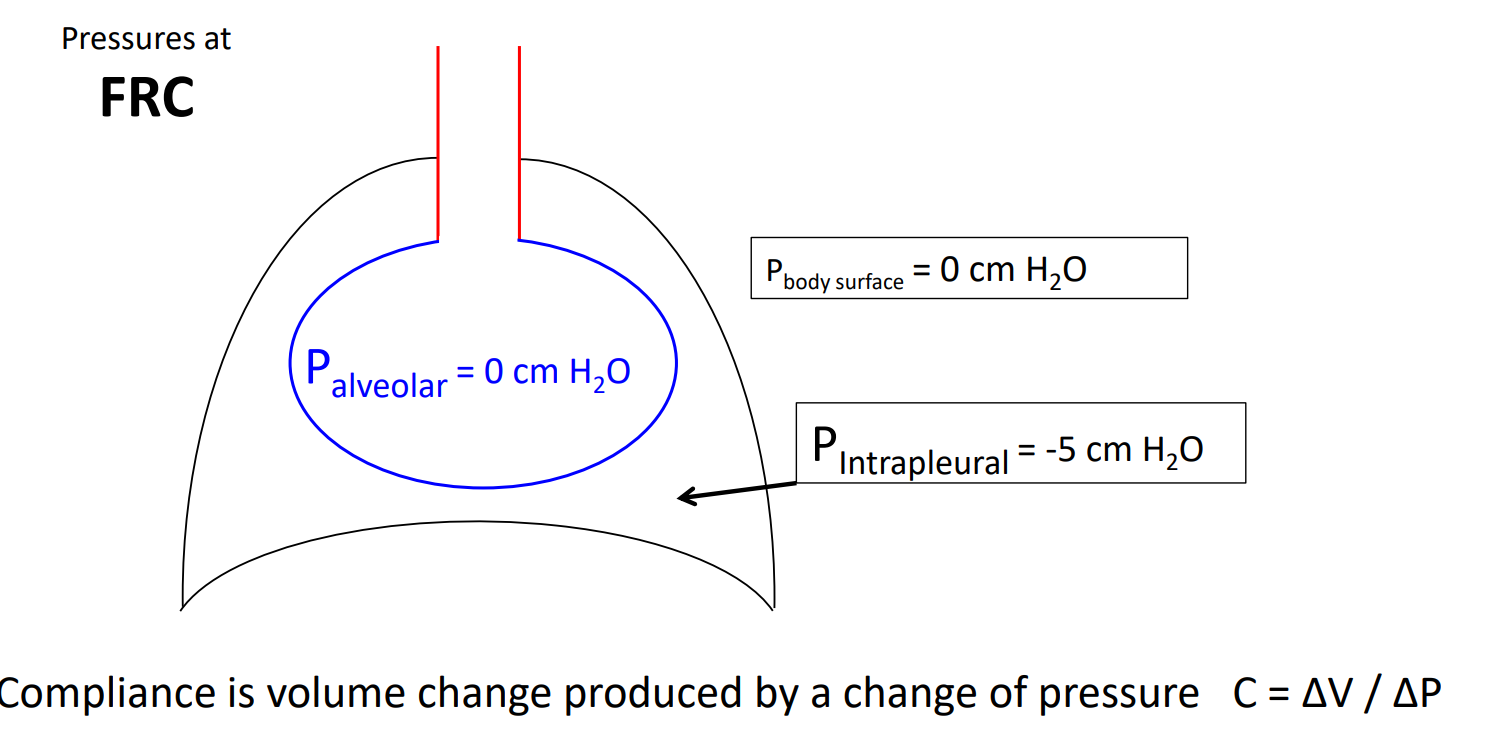
What is Trans-Organ Pressure?
Make sure you understand this formular

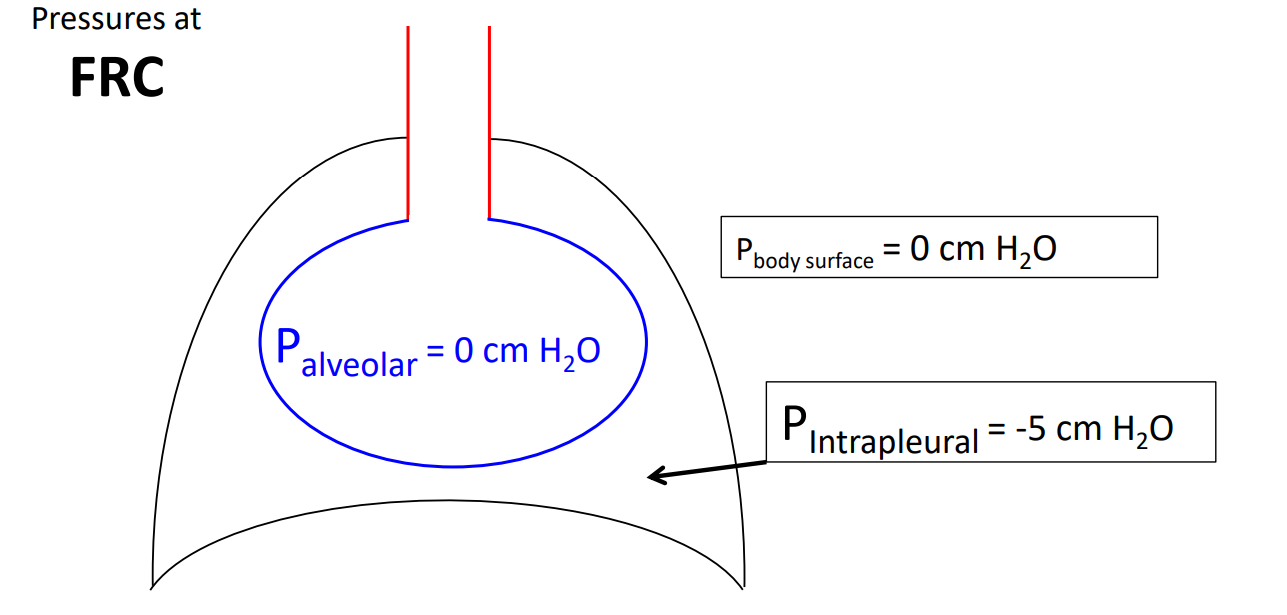
What would be the Trans-pulmonary or lung pressure?
It would be about 5 cm H2O
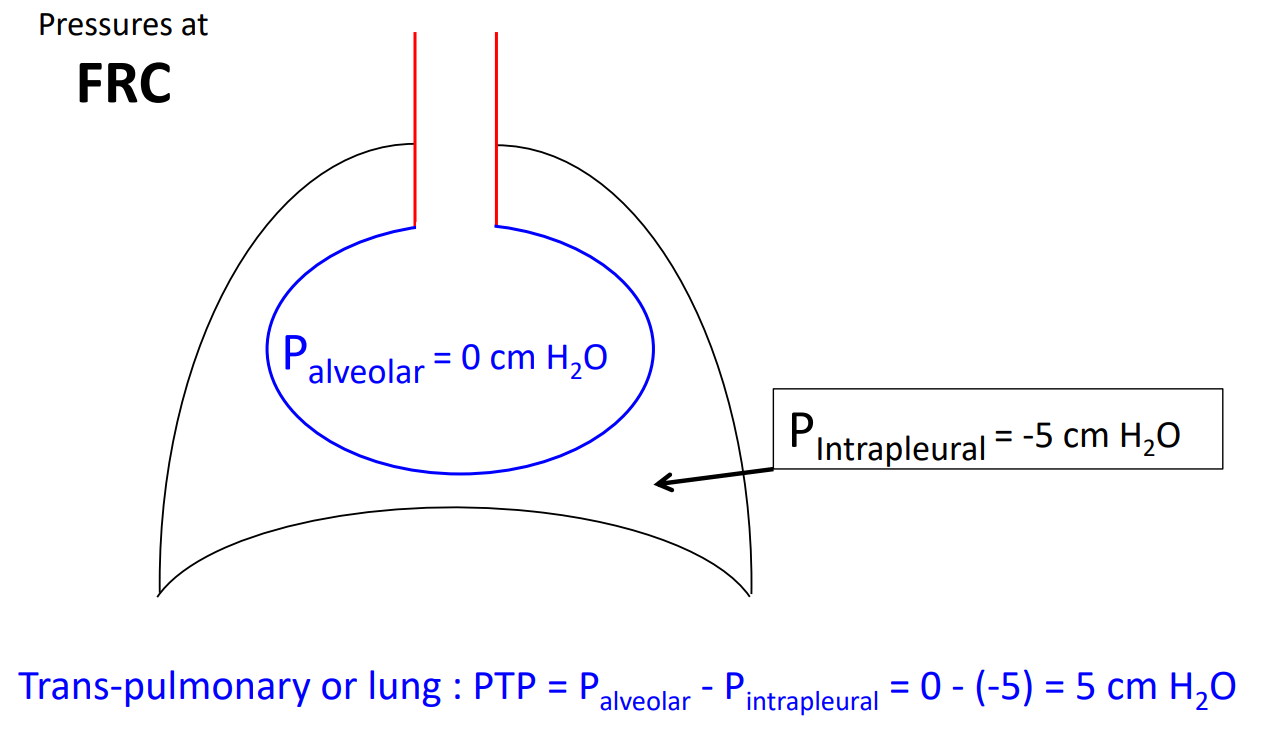
What would be the pressures for the Trans-pulmonary, Trans-chest wall, and the respiratory system?
Trans-pulmonary = 5 cm H2O
Trans-chest wall = -5 cm H2O
Respiratory System = 0 cm H2O
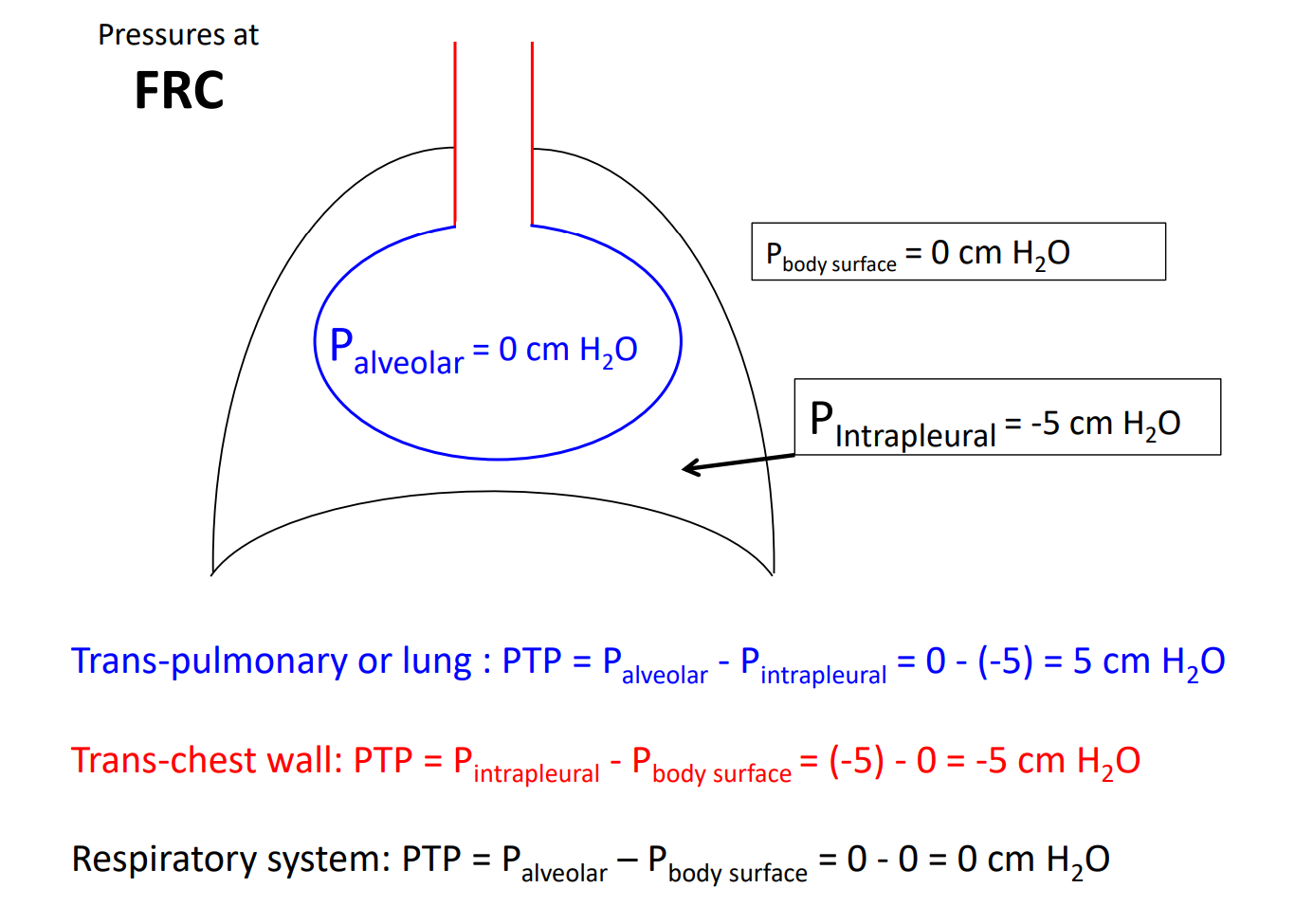
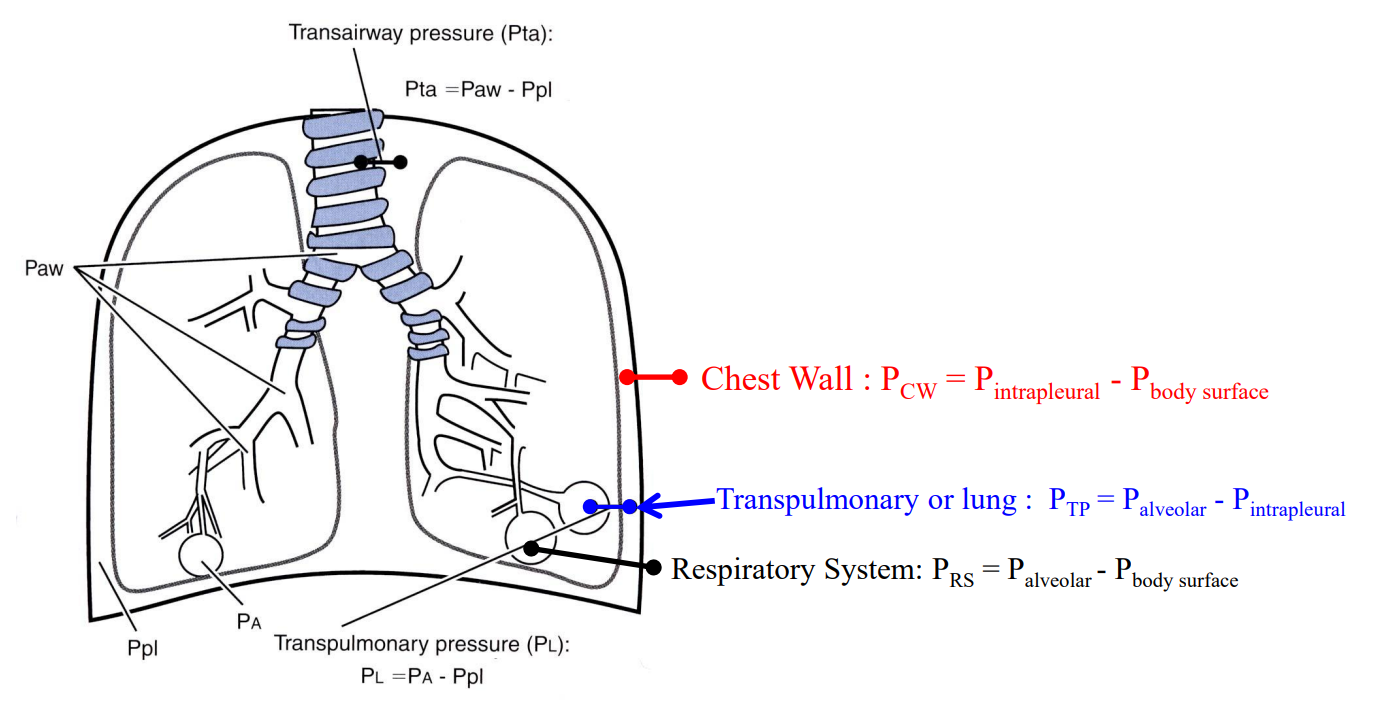
This is an image demonstrating how to find the pressures at these different areas and how to arrange the formulas.
Please make sure you have a thorough understanding of this image
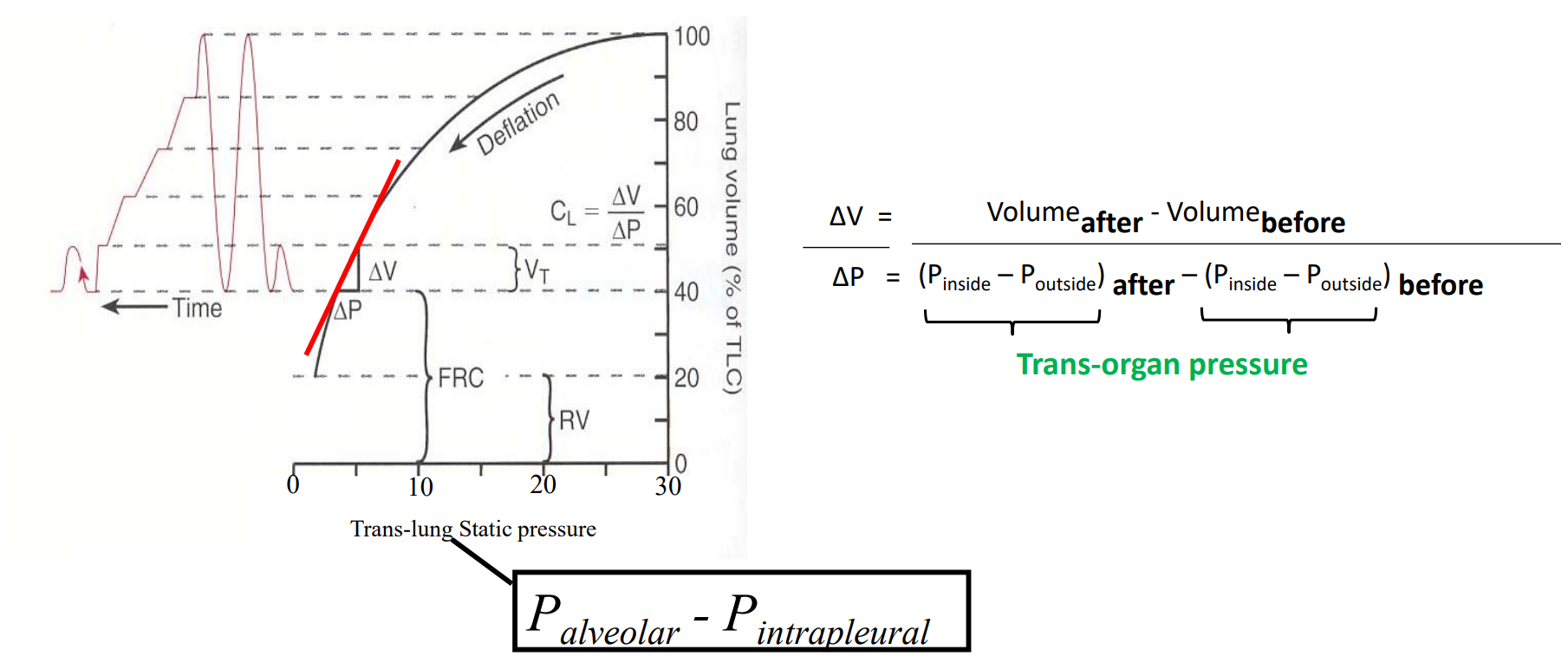
What does the slope of the tangent to this curve represent?
The compliance of the lung at the volume of the tangent in the lung.
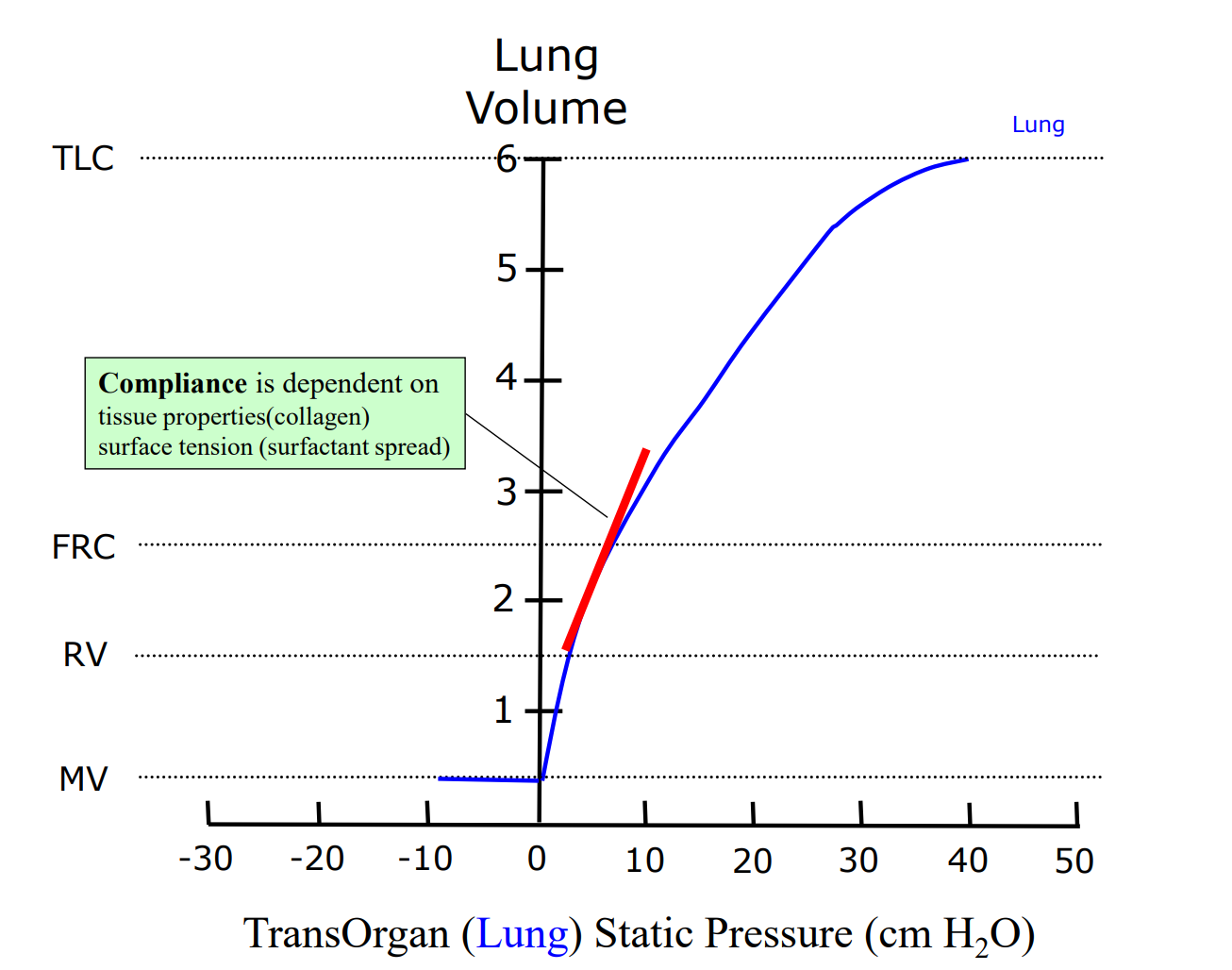
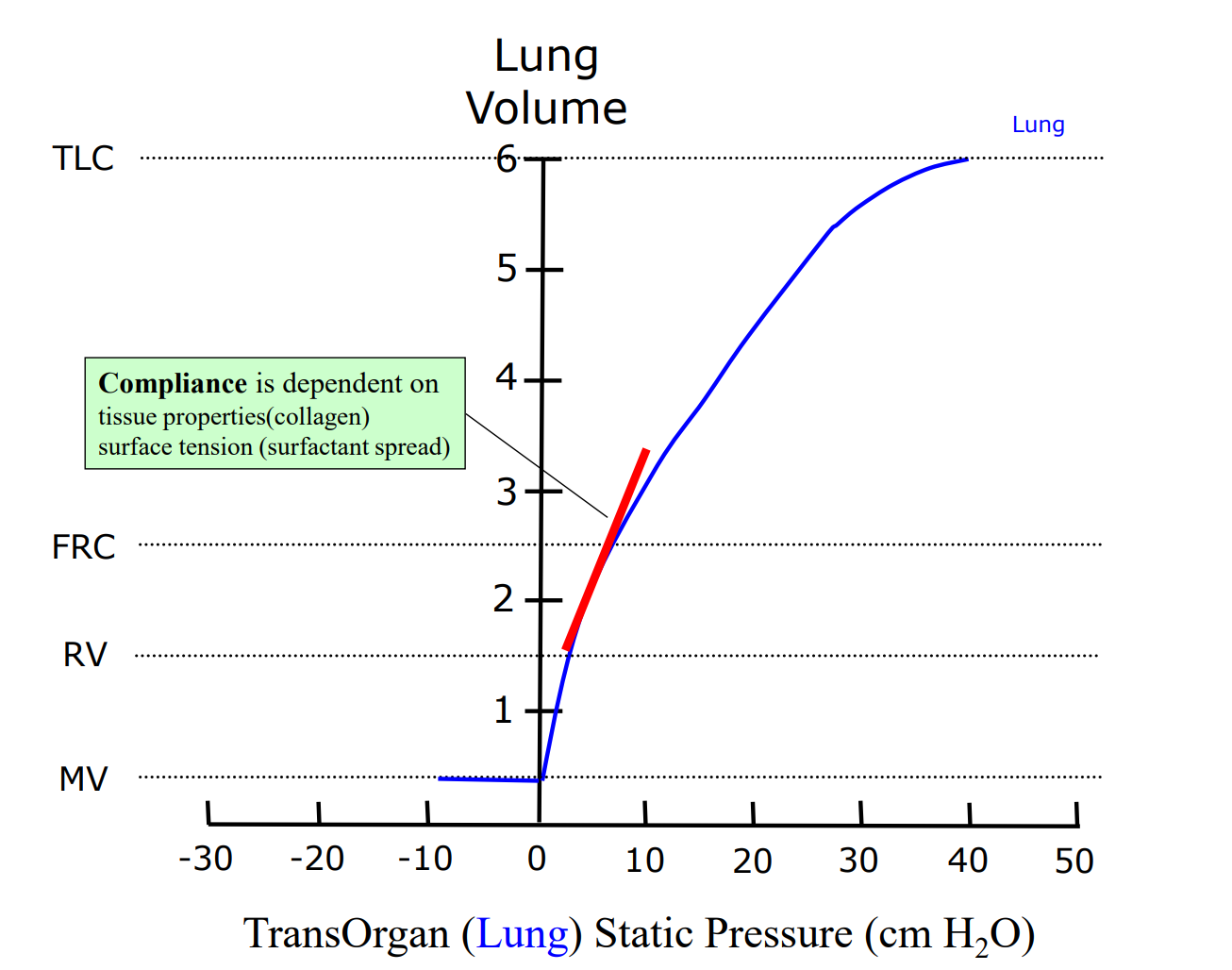
T/F: Compliance is volume dependent
T - Take note of the change in the slope of this curve. Higher lung volumes decrease the compliance.
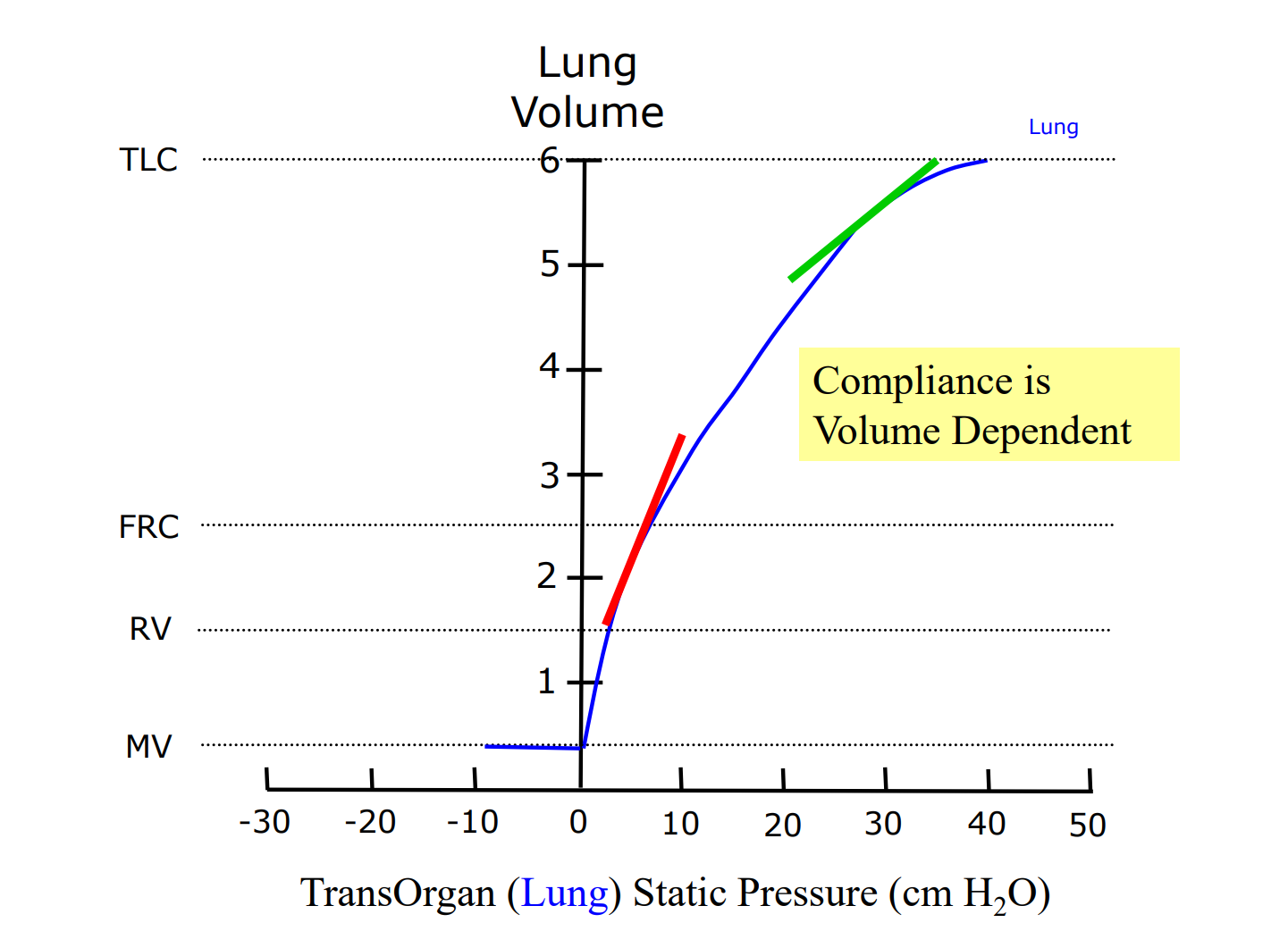
How does gravity affect the distribution of inspired air in the chest cavity? (L - Air, M - Water, R - Lungs w/ air)
There would be a pressure gradient like in the water. We displace some of the water with the air from the lung, thus explaining why the pressure is lower than the cylinder with the water but still higher than the cylinder with the air. There is still mass within the cylinder that has enough gravity to weigh down on itself but it is less than a cylinder completely filled with water.
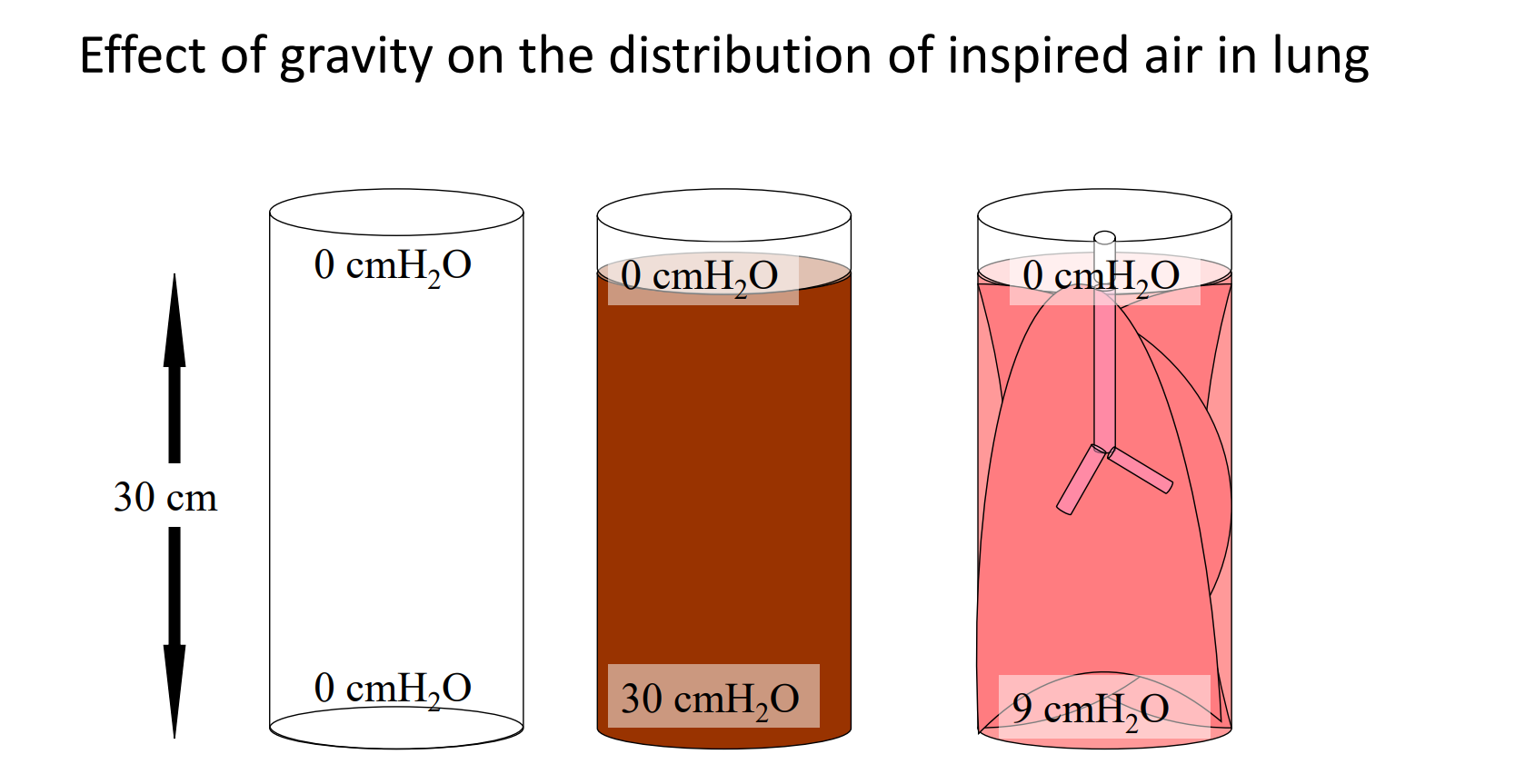
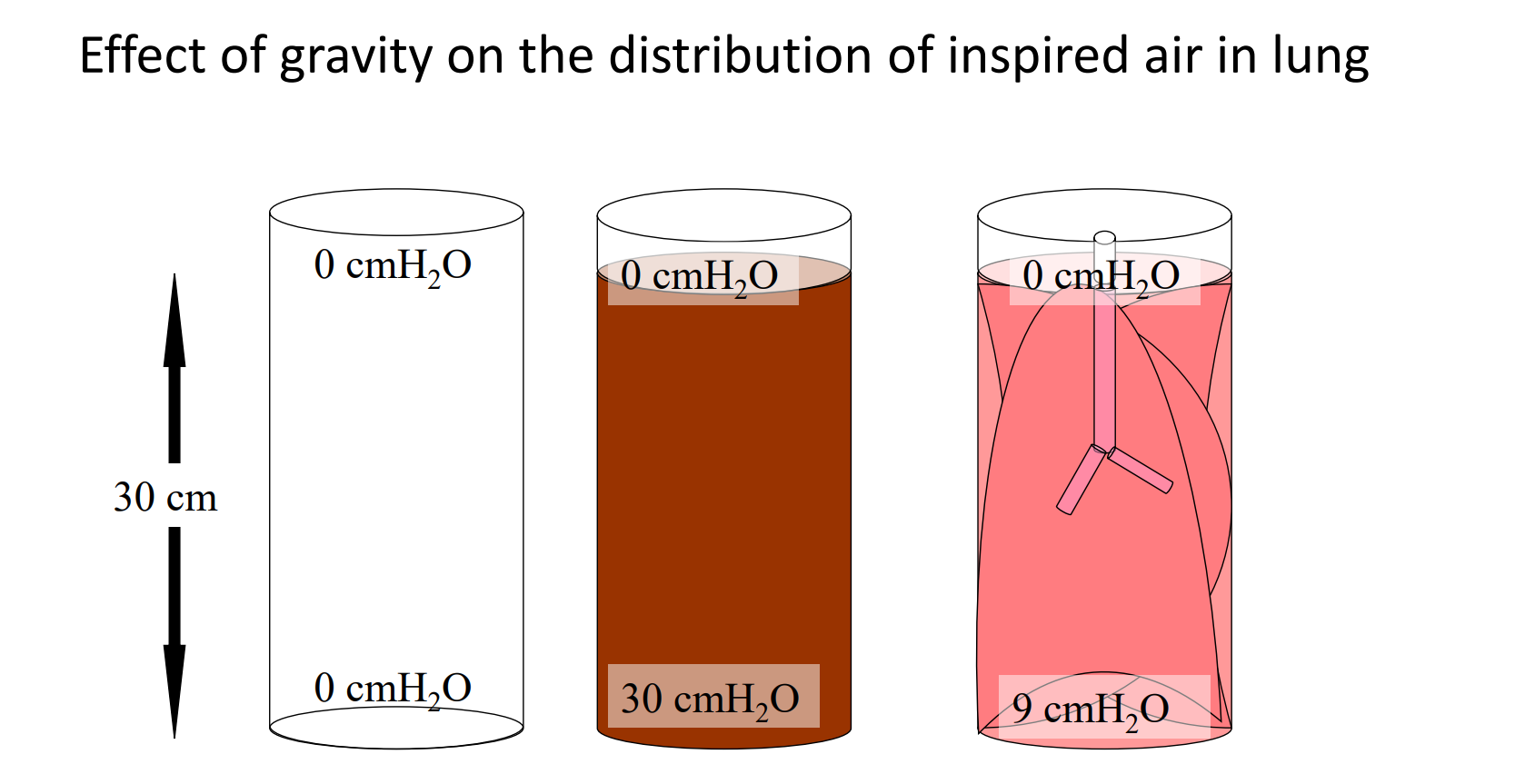
Given this image of the different cylinders full of different things, what explains the pleural pressure difference between the top and the bottom of the lung?
The distribution of gravity
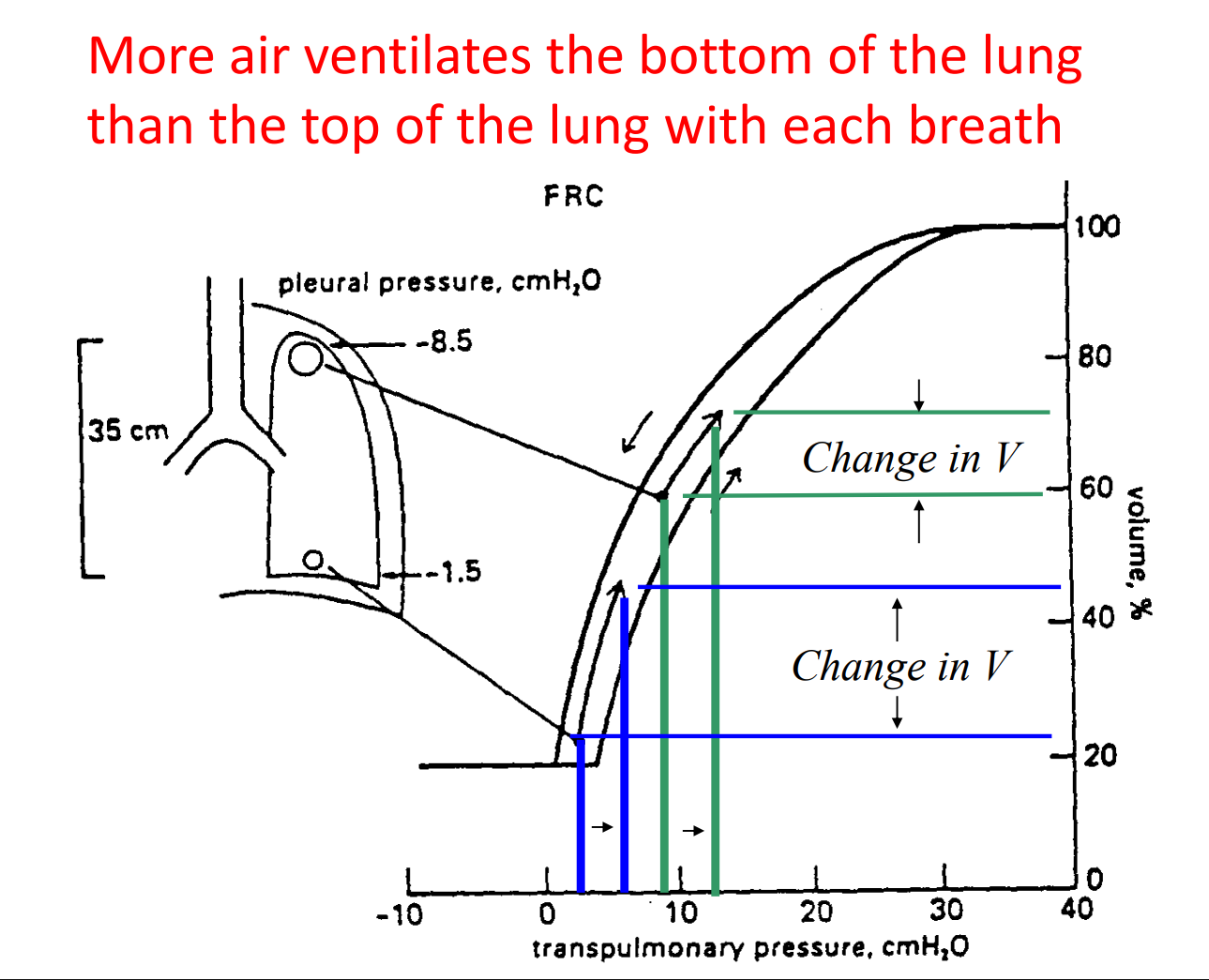
T/F: The bottom of the lung has a greater ventilation than at the top.
T - This is due to gravity, notice how the blood follows the same trend of a negative linear slope as you approach the top. Blood flow and ventilation are matched.
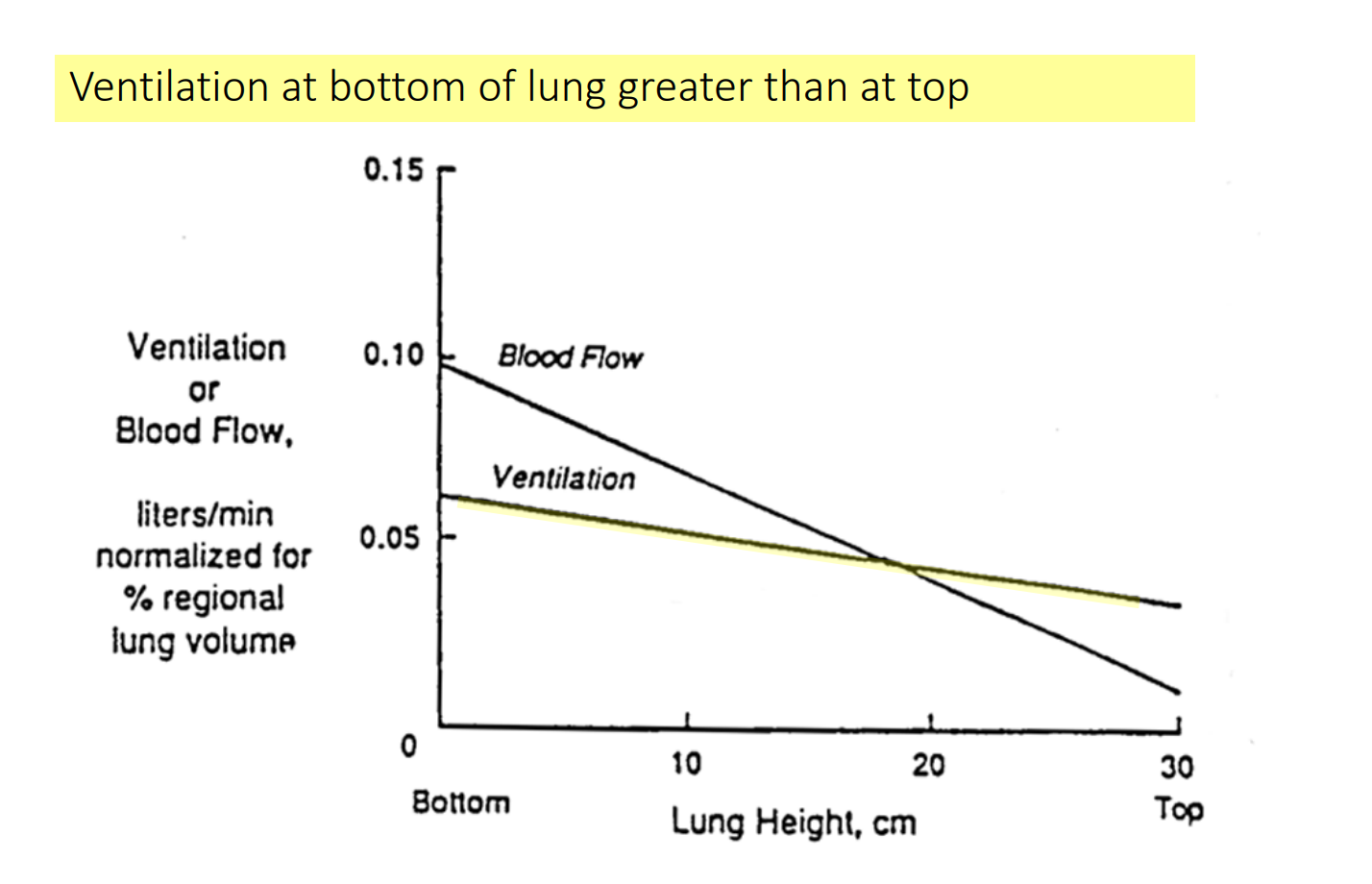
T/F: Lung compliance is reduced when there is restrictive disease in the lung.
T - with a restrictive disease you have an increased presence of collagen in the lung from the lung healing itself. Collagen is less flexible than elastin, so an elevated presence of collagen will restrict the lungs’ ability to expand.
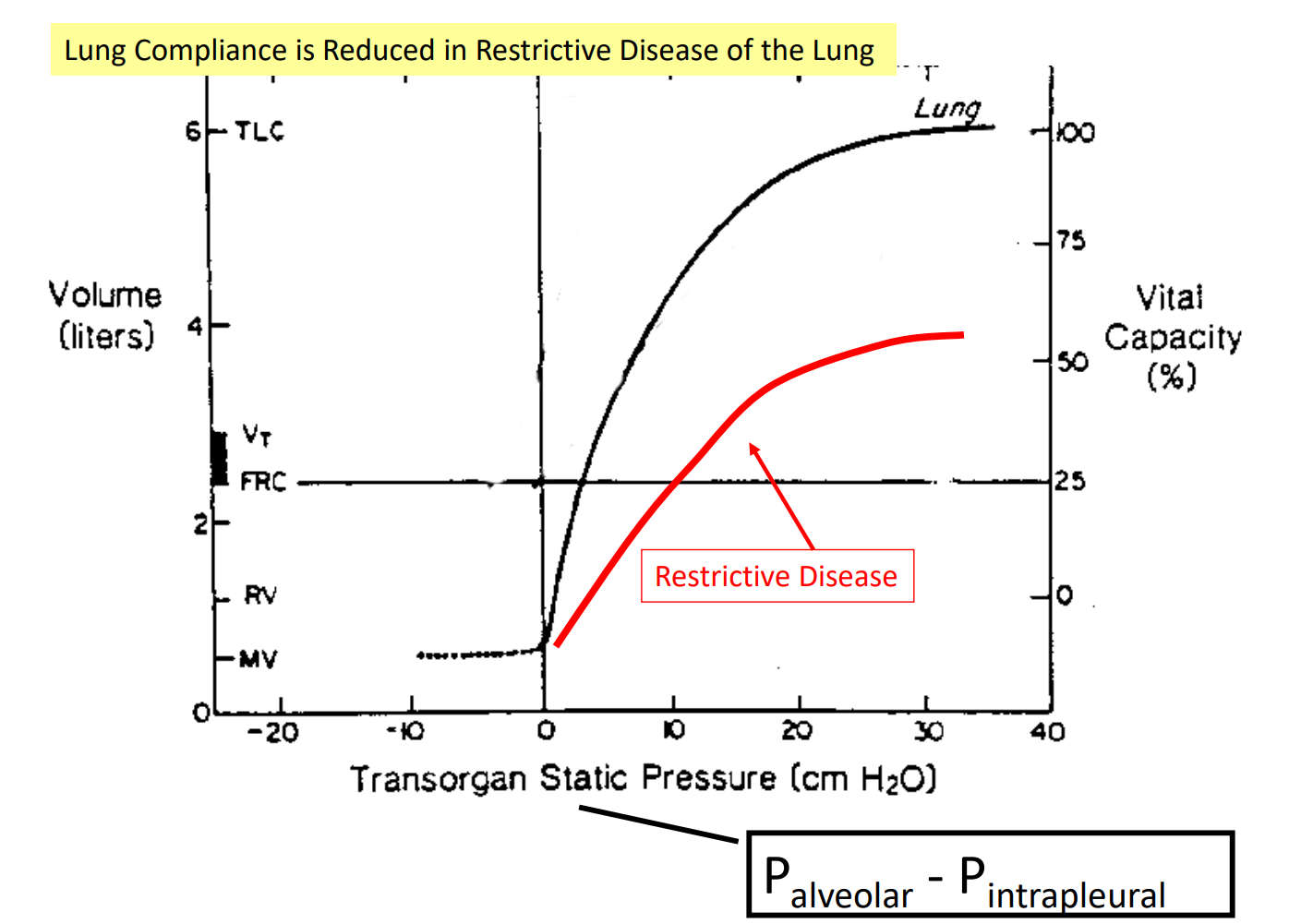
What are some of the mechanics of a restrictive disease?
Defined by decreased compliance
examples:
pulmonary fibrosis
Infant Respiratory Distress Syndrome (IRDS= decreased surfactant)
Acute Respiratory Distress Syndrome (ARDS)
obesity
pneumothorax, hemothorax
deformities of spine / chest wall
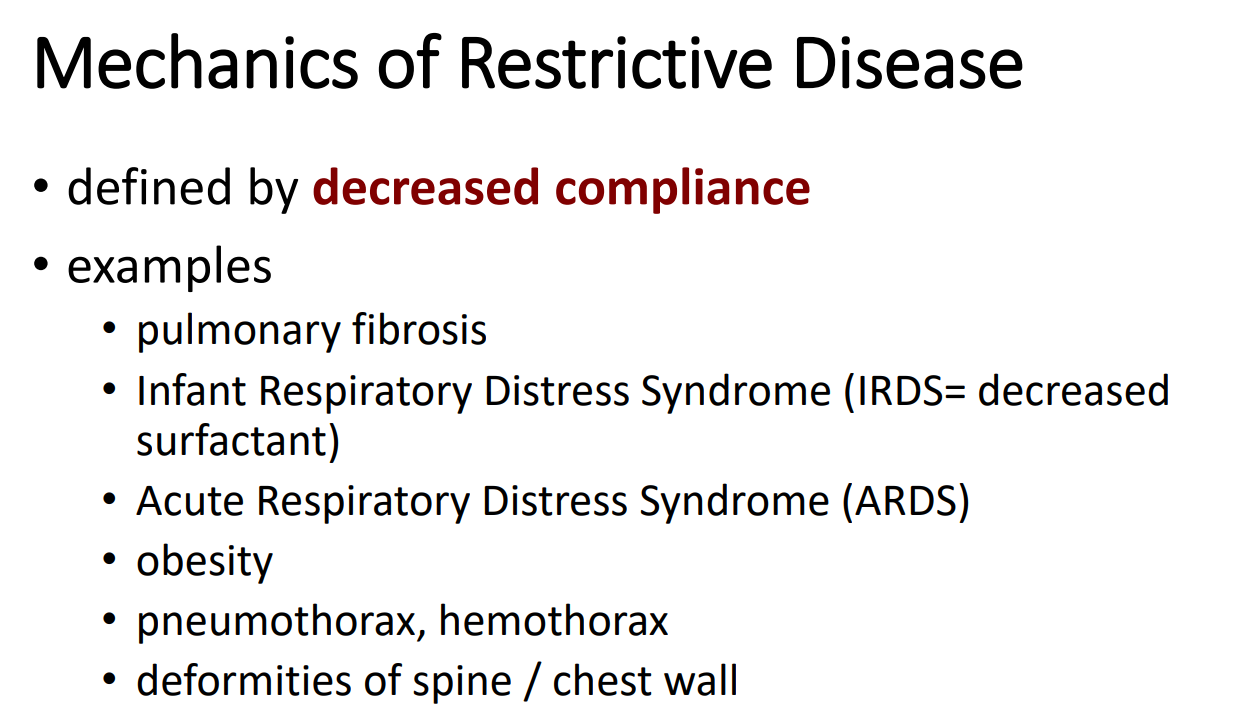
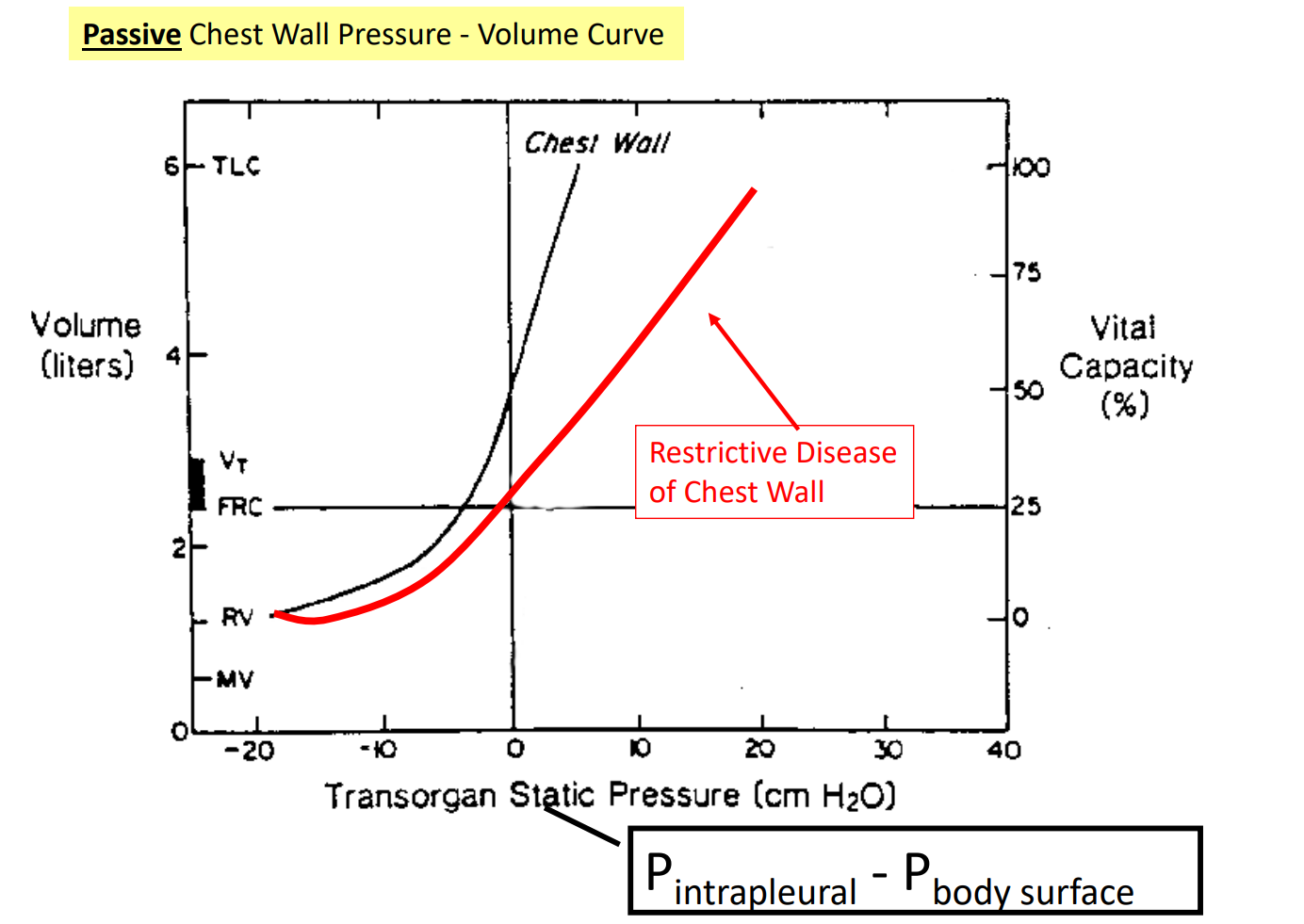
Here is a plot of the chest wall compliance curve. T/F: A greater pressure causes a smaller change in volume.
T - take not of how the slope changes on this graph.
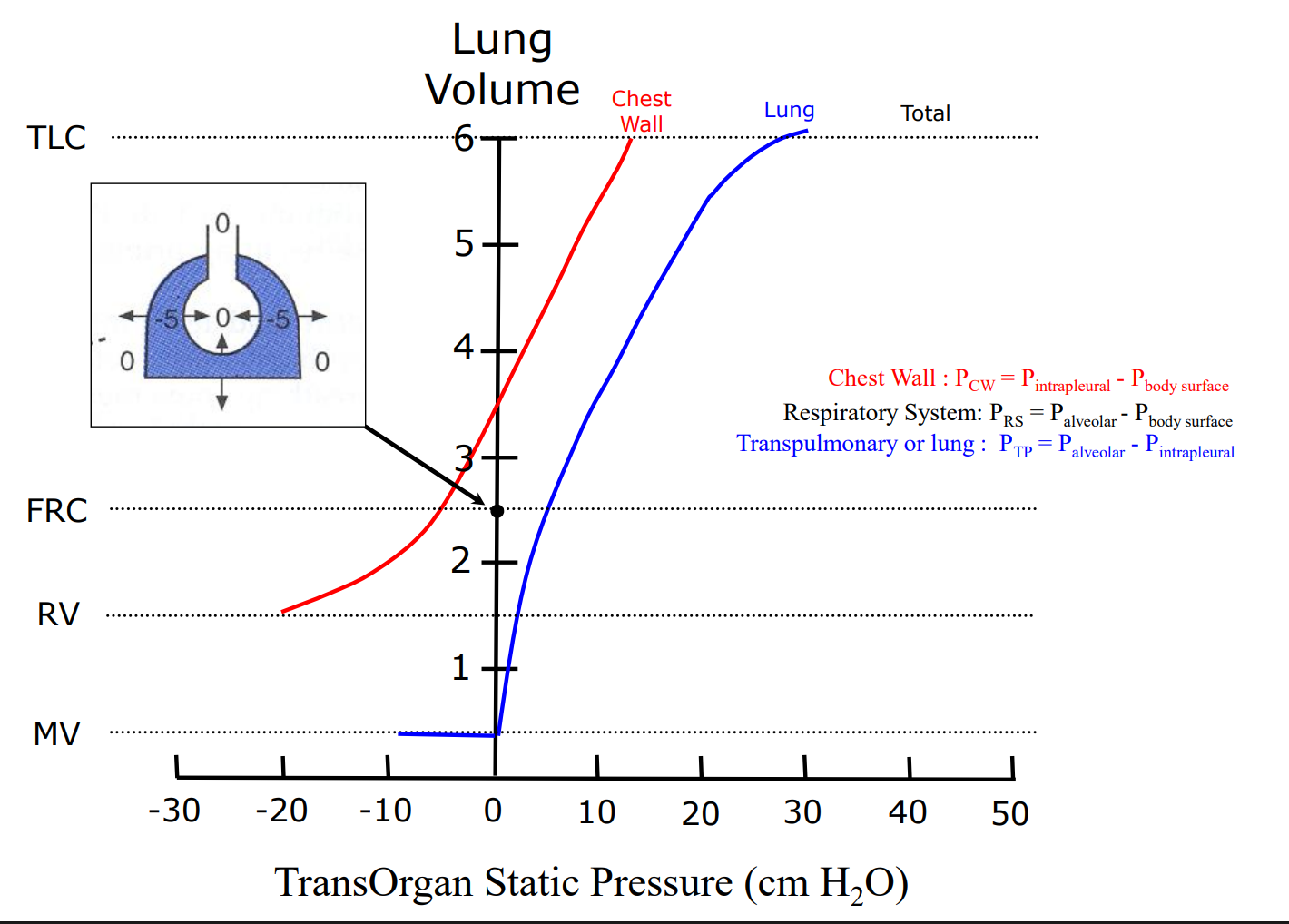
Here is a plot of the respiratory system as a whole. What is the black arrow pointing to on this plot?
Functional Residual Capacity (FRC)
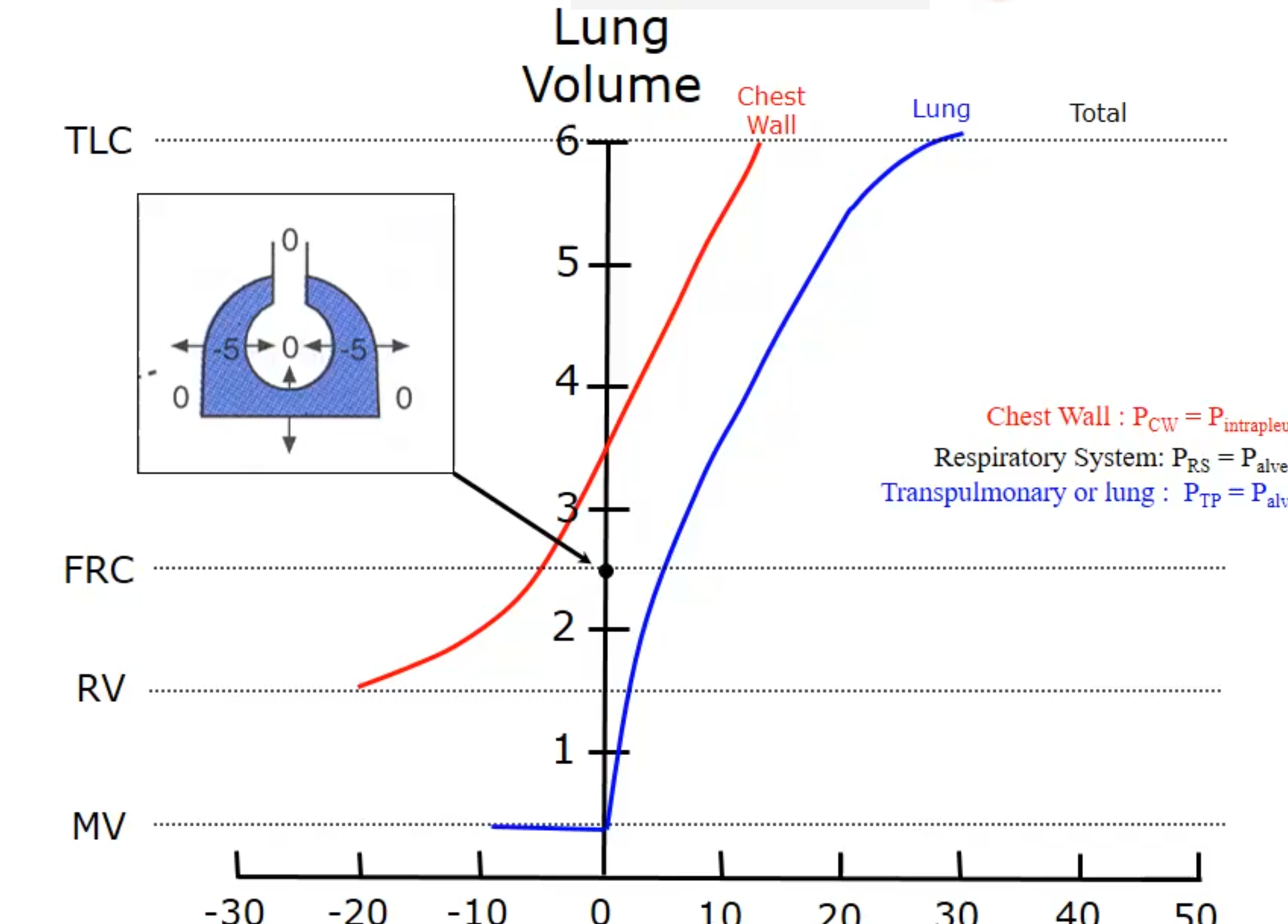
How would you determine that the total pressure in the system?
You draw a dotted line down from the top of the lines to the pressure axis. Add together where they intersect the x-axis and that gives you your total.
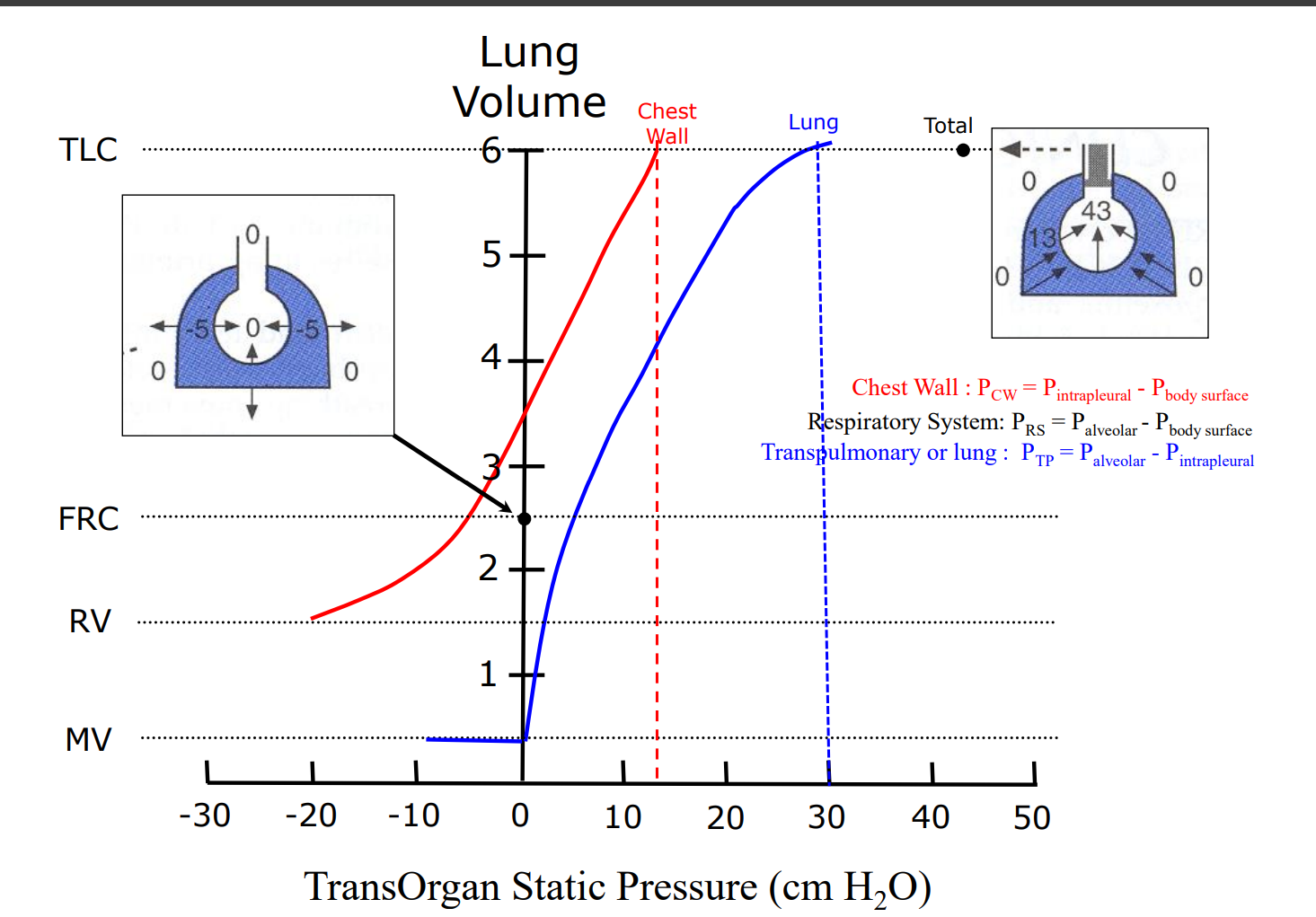
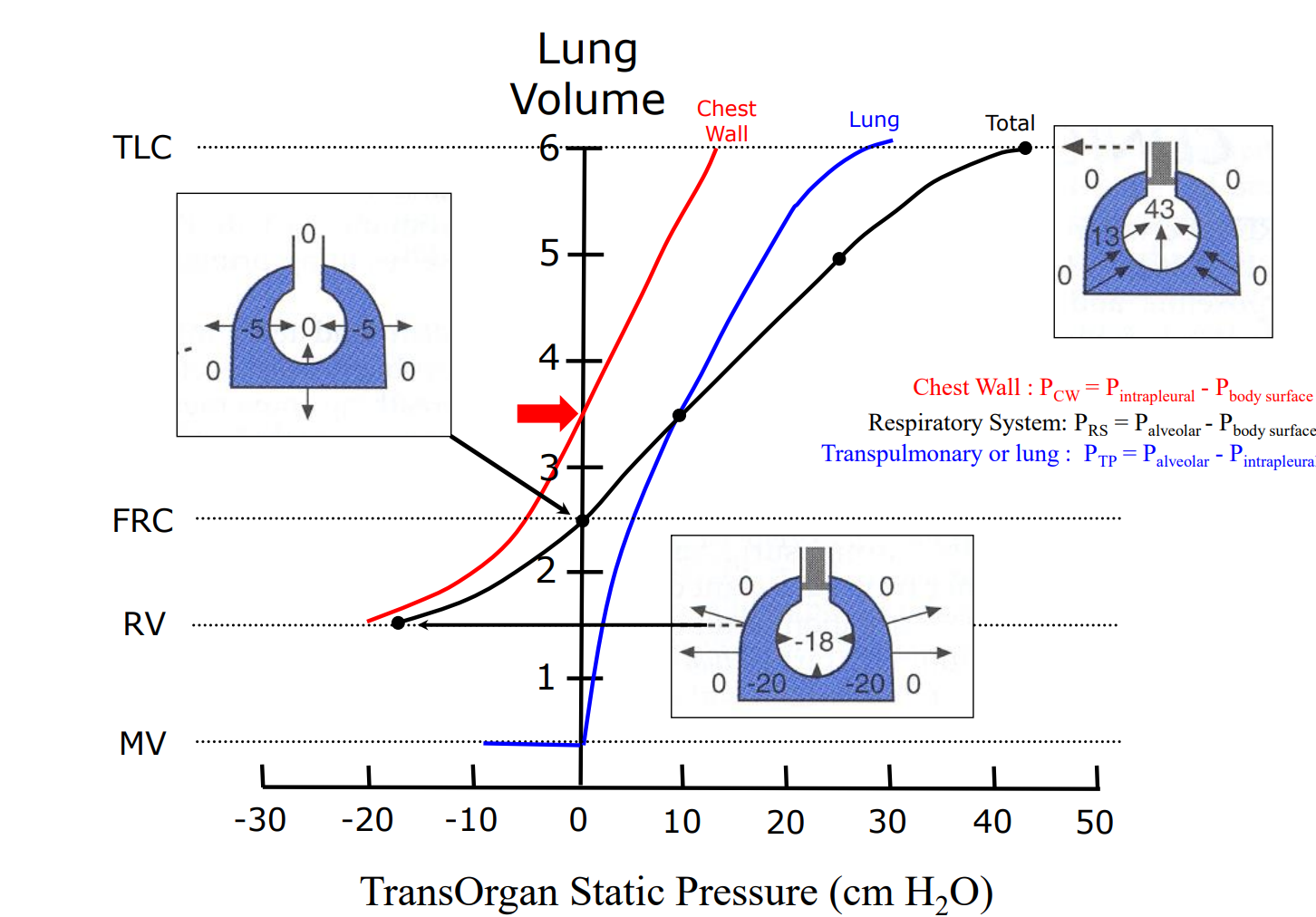
Why do we plot that black dot to be level with the red arrow?
The Chest wall has a pressure of zero at the red arrow, so the only pressure that would be impacting the total pressure line would be the lungs, thus why we move our black dot to coincide with the lung line.

How do we calculate the compliance of the respiratory system if we know the lung and chest wall compliance?
You add the reciprocals of their values to get the reciprocal of the respiratory system pressure.


Dynamic is going to be covered in the next lecture, know the difference between the two.
Nice work